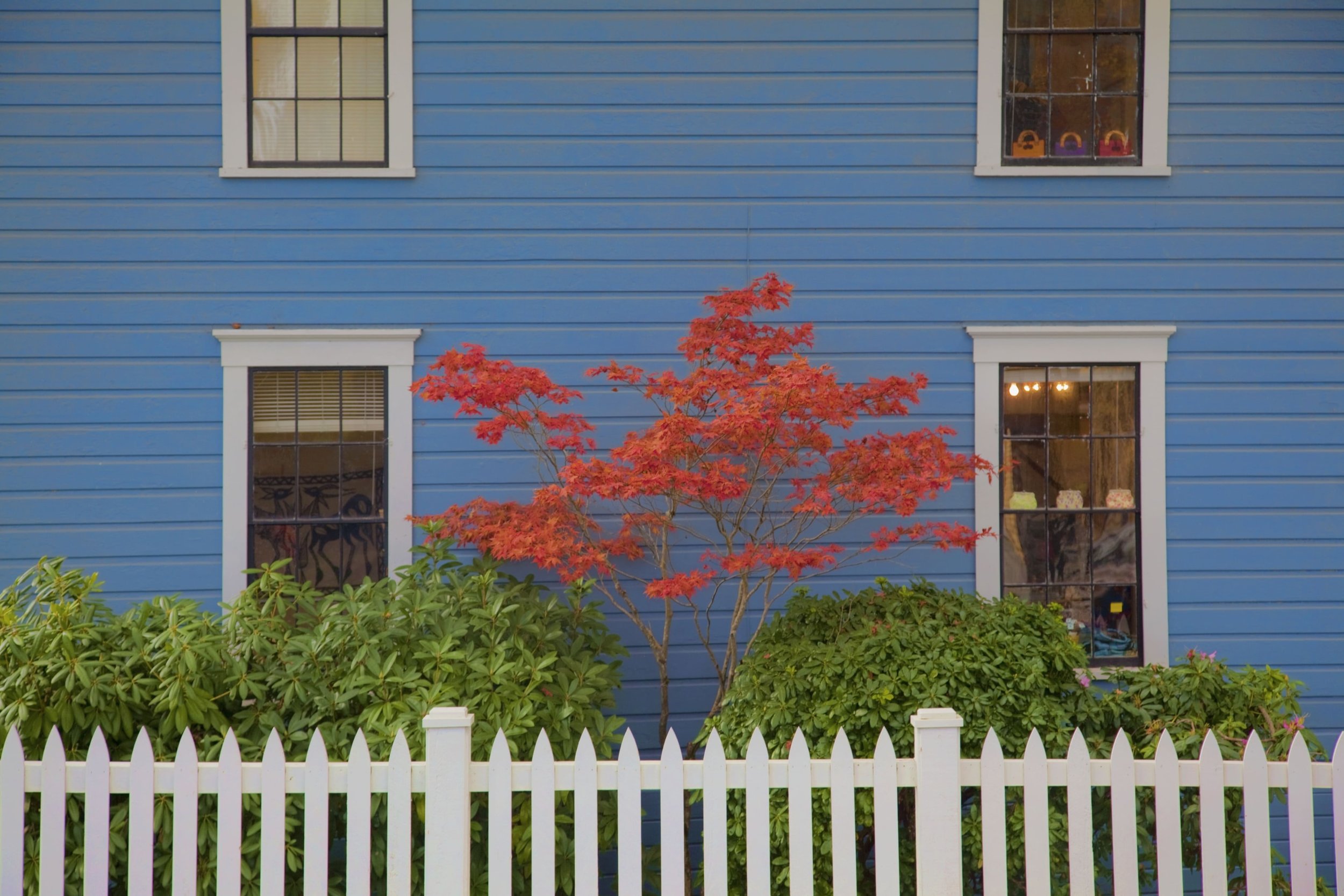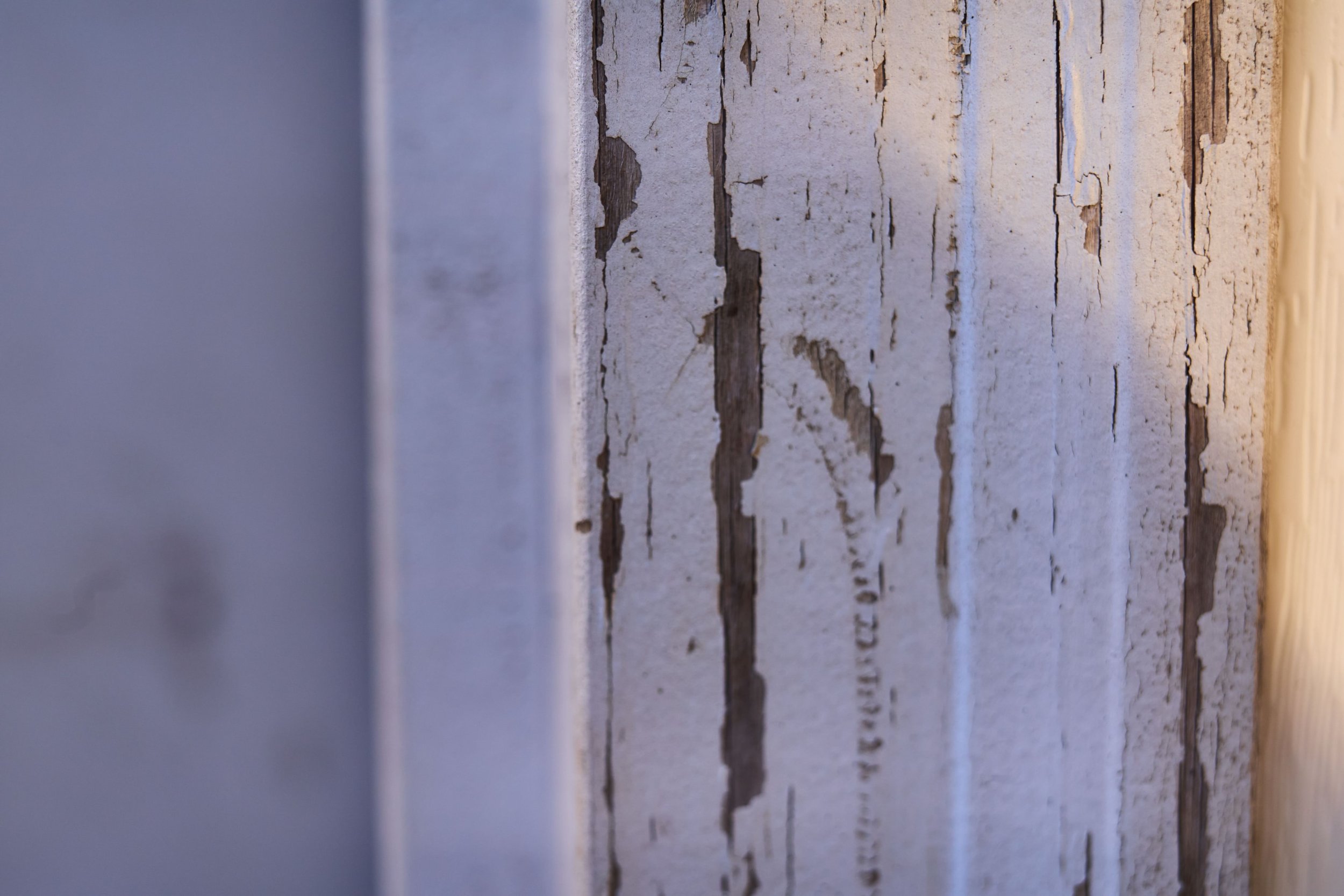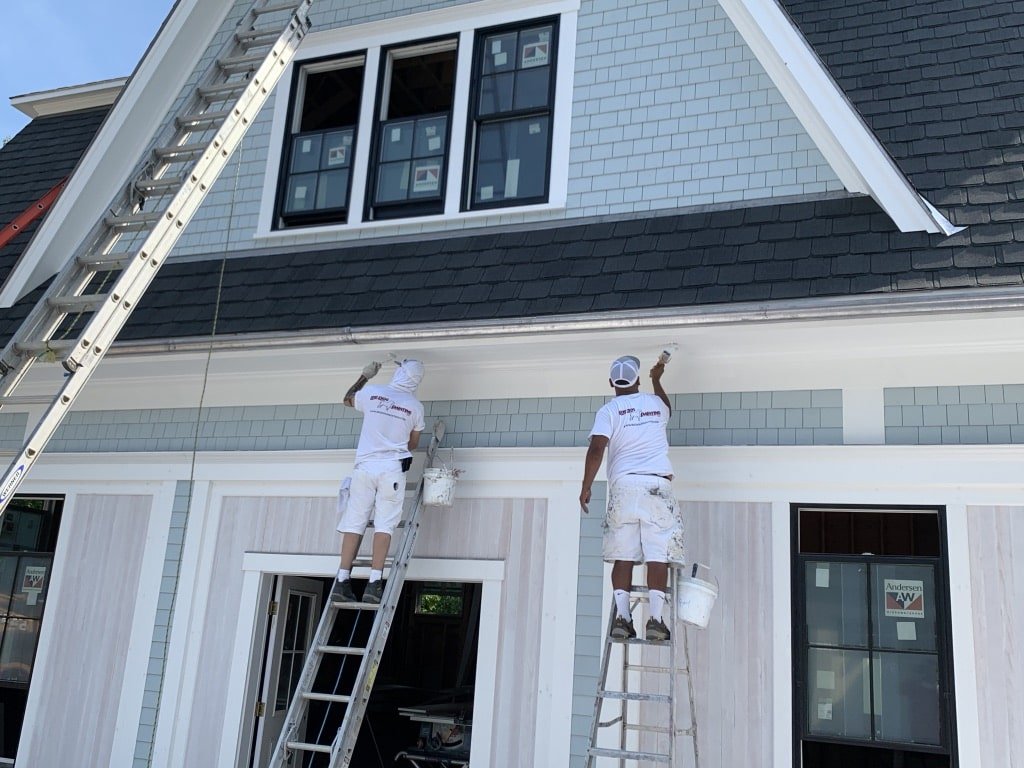How Often Should You Paint the Exterior of your Home?
In this guide, Big Dog Painting will break down recommended repainting timelines for wood, aluminum, vinyl, stucco, and brick. Plus, we’ll share expert tips on preparation and maintenance to ensure your exterior paint job lasts as long as possible. Knowing when to repaint can protect your home and keep it looking its best.
Most homes need a fresh coat of paint every 7–10 years, but the right maintenance can push that timeline even further. Factors like climate, siding material, and previous paint quality all play a role. But one thing is certain—a little upkeep goes a long way in keeping your home looking great and avoiding major repaint costs.
At Big Dog Painting, we’ve seen firsthand how preventative maintenance can extend the life of an exterior paint job. Customers who stick to a regular care plan often delay full repaints, sometimes by years, while keeping their homes in top shape.
Key Takeaways
Exterior home painting should generally occur every 7 to 10 years, depending on siding material and local climate.
Proper preparation, including cleaning, repairing damages, and priming, is crucial for a successful long-lasting paint job.
Regular maintenance—like soft washing, touch-ups, and gutter checks—can extend your exterior paint job beyond the usual 7–10 years, saving you money on costly repaints.
How Frequently Should You Paint Your Home's Exterior?
Many homeowners wonder, how often they'll need to paint their home's exterior. While there isn’t a universal answer, most homes benefit from a fresh coat every 7 to 10 years. This timeline varies depending on factors like the type of siding and local climate. For example, a high-quality exterior paint job can last between 7 to 10 years, but homes in harsher climates may require more frequent attention.
Repainting every five years is often suggested to maintain longevity and protection, even without visible signs of wear. The type of siding on your home also can influence repainting frequency.
Here’s a closer look at the specifics for different siding materials.
Wood Siding
Wood siding, appreciated for its classic and charming appearance, demands more frequent maintenance than other materials depending on environmental exposure. Intense sunlight and moisture can accelerate wear, making consistent upkeep vital for maintaining its beauty and integrity.
In harsh conditions, regular inspections and repainting every three years is sometimes advisable. In more moderate climates, this interval can extend to seven years, provided paint prep is done properly.
Aluminum Siding
Aluminum siding is favored for its durability and ease of maintenance, typically requiring repainting every 7 to 10 years. However, this interval can vary based on condition and environmental factors. Generally, paint on aluminum siding lasts about five years before needing a refresh.
Vinyl Siding
Vinyl siding is lauded for its low maintenance and longevity, typically holding up well for about 10 years before requiring a new coat of paint. Its durability makes it a cost-effective choice for those seeking less frequent maintenance.
Despite its resilience, monitoring its condition is important. Repainting every decade helps maintain its appearance and ensures surface protection.
Stucco and Brick
Stucco and brick are robust materials, generally requiring repainting every 10 years. While durable, environmental conditions can affect their lifespan. Homes in areas with extreme weather may need more frequent repainting to maintain protection and appearance.
Preventative Maintenance: The Key to Longer-Lasting Paint
Paint isn’t just about looks—it’s the first line of defense against weather and wear. Without maintenance, small problems like mildew, peeling, or rotting trim can turn into expensive repairs. That’s why we offer an Exterior Maintenance Program, tailored to your home’s needs.
Most plans include:
✅ Annual or Biannual Soft Washing – Removes dirt, mold, and mildew before they damage paint.
✅ Touch-Ups & Inspections – We spot problem areas early and apply maintenance coats as needed.
✅ Gutter & Water Shedding Checks – Leaky gutters cause rot; we clean and inspect them to prevent damage.
✅ Deck & High-Traffic Area Maintenance – Decking, doors, and thresholds take more wear and often need more frequent care.
Homeowners who invest in small, regular updates often see lower repaint costs down the road. Instead of a massive overhaul every decade, they get a fresh, well-maintained look all year round.
The Cost of Waiting Too Long
We get it—most homeowners don’t think about their exterior paint job until it starts peeling. But by that point, the damage has already started. Rotting wood, deep cracks, and failing caulk add up to higher labor costs and more materials needed.
For example, we’ve worked with customers who’ve stuck to a maintenance program for nearly a decade. When it finally came time for a full repaint, their costs were significantly lower because they’d prevented major damage.
How Do You Know It’s Time for a Repaint?
If you're unsure whether your house needs a full repaint or just a refresh, look for these signs:
Peeling, bubbling, or cracking paint – A sign that moisture is getting in
Faded or chalky surfaces – UV rays break down paint over time.
Exposed wood or rotting trim – Unchecked, this leads to expensive repairs.
Dark streaks or mildew buildup – Can eat away at surfaces and paint protection.
Not sure where your house stands? A quick inspection can help. With our Exterior Maintenance Program, we track the condition of your home over time, so you always know what needs attention and when.
Factors Influencing How Often You Should Repaint Your Home
How often you need to repaint your house depends on a few key things—weather, paint quality, and how well the last job was done. Some homes can go 10 years without a repaint, while others start peeling much sooner. The right prep and maintenance can make a big difference, saving you money and keeping your home looking great longer. Let’s break down what really affects how long your paint job lasts.
Climate Considerations
Climate and weather conditions significantly influence the longevity of your exterior paint. Harsh weather such as intense sun, strong winds, and heavy rain can shorten paint lifespan. Coastal homes often need repainting sooner due to the harsh marine climate, which accelerates paint deterioration.
Extreme temperatures, whether hot or cold, also affect the durability of exterior paint. Choosing paint that can withstand local weather conditions enhances its longevity, making climate consideration crucial when planning your painting schedule.
Quality of Prep
A good paint job starts long before the first coat goes on. Proper prep work—like cleaning the surface, scraping off old peeling paint, repairing damage, and using the right primer—makes all the difference in how long your exterior paint lasts. Skipping these steps or rushing through them can lead to early peeling, cracking, or moisture damage, cutting years off the life of your paint job. On the other hand, a well-prepped surface helps paint stick better and hold up longer against sun, rain, and temperature changes.
Big Dog Painting’s Approach to Surface Preparation for Exterior Painting
At Big Dog Painting, we know that proper surface preparation is the foundation of any successful exterior painting project. Before we even think about picking up a brush, we meticulously inspect your home’s exterior for areas that need attention. This includes addressing chipped or peeling paint, repairing broken shingles, removing dirt and mold buildup, and ensuring all surfaces are clean and sound.
We also apply primer where needed to create a strong, smooth base for the paint. This step is especially critical for porous or previously damaged materials, such as wood or stucco, to ensure a durable and flawless finish. Our thorough preparation process ensures your home’s exterior not only looks stunning but stays protected for years to come.
How to Tell It’s Time to Repaint – Big Dog Painting Style
Not sure if it’s time to freshen up your home’s exterior? No worries, we’ve got you covered. Some clear signs it’s time for a new paint job include faded colors, cracking or peeling paint, or just an overall weathered look. Ignoring these signs can lead to bigger issues, like damage to the materials underneath – and let’s face it, no one wants to deal with costly repairs down the line.
Keeping an eye out for these tell-tale signs helps your home stay in great shape and looking its best. If you’re noticing any of these issues, it’s probably time to give Big Dog Painting a call – we’ll make sure your house looks like new again!
Fading Colors
Visible fading, especially in dark colors, is a clear sign that your exterior paint has reached the end of its life. Discoloration indicates UV radiation damage, particularly in darker shades. Addressing fading colors promptly is crucial for maintaining your home’s exterior appearance and protection.
When significant fading is noticeable, it’s time to consider repainting. This refreshes your home’s look and ensures exterior surfaces remain protected against the sun’s harsh rays.
Cracking or Peeling Paint
Cracks, peeling paint, and flaking clearly indicate that your current paint job is failing. When paint starts to crack or peel, it shows it’s no longer adhering properly, exposing the underlying material to potential damage.
Peeling or flaking paint indicates the need for a repaint to restore the protective barrier and maintain the integrity of your home’s exterior. Addressing these issues promptly avoids more extensive repairs later.y
Water Damage and Mold
Bubbling paint and mildew indicate water damage and mold on the exterior. Moisture intrusion can cause widespread staining and bubbling paint, requiring immediate attention. Vigilance for these signs is essential to prevent further damage and ensure safe living conditions.
When these symptoms appear, address moisture issues and repaint to restore your home’s protective layer. This helps maintain a safe and healthy environment for your family.
Preparing Your House for a New Paint Job
Proper preparation is crucial for a successful and long-lasting paint job. Before starting, inspect your home’s exterior for peeling or bubbling paint, which exposes the underlying material and requires immediate attention. Check for failing caulk around windows and doors, as cracked caulk indicates the need for repairs and repainting.
Address damages like cracks or holes before painting to achieve a smooth finish, ensuring the new paint adheres well and provides a durable, protective layer.
Here are the key steps in preparing your home to paint a house for a new paint job.
Cleaning the Surface
Cleaning the surface is essential for proper paint adhesion and the longevity of the new paint job. Dust and debris can hinder paint adhesion, so cleaning the surface before painting is critical. A mixture of lukewarm water and mild soap works well for cleaning surfaces.
For stubborn dirt and old paint, pressure washing, stripping old paint, or hand scraping may be necessary. Ensuring the walls are clean removes dust and stains that could hinder paint adhesion, resulting in a smoother and more durable finish.
Repairing Damages
Before repainting, addressing any damages to the exterior surfaces is essential. Common repairs include patching stucco and filling cracks, which save money in the long run compared to complete re-stuccoing. Patching cracks and repairing damages ensure a smooth and uniform finish when painting the entire house.
Making these repairs not only improves your home’s appearance but also ensures the new paint adheres properly and lasts longer.
Priming the Surface
Priming the surface before painting is crucial for ensuring the durability and adherence of your new paint job. Using a primer suitable for your home’s exterior material enhances paint adhesion, resulting in a more durable and long-lasting finish. This step is particularly important for porous surfaces like wood and stucco, which can absorb paint unevenly without proper priming.
Priming improves paint adherence and helps achieve better color accuracy and coverage. By creating a uniform base, primer ensures the final coat of paint looks smooth and vibrant. Skipping this step can result in uneven paint application and a shorter lifespan for your paint job.
Benefits of Regular Exterior Painting
Paint your house regularly to enjoy numerous benefits beyond just aesthetics. It enhances property value, provides a protective barrier against environmental damage, and extends the life of your home’s exterior materials. By addressing small damages like cracks and holes, regular painting can prevent more extensive and costly repairs.
High-quality exterior paint can save money in the long term by minimizing the need for frequent repainting and repairs. Let’s explore the specific benefits of maintaining a regular painting schedule.
Enhanced Curb Appeal
A fresh coat of paint significantly boosts curb appeal and shows that the property is well-maintained. A new paint job can make your house stand out with modern and trendy colors, making it more attractive to potential buyers. Painting your home before selling it can increase its value by enhancing its visual appeal.
Additionally, a well-painted house exterior reflects pride of ownership and can make your house’s exterior the envy of the neighborhood. It’s a simple yet effective way to give your property a facelift and improve its overall appearance.
Protection Against Elements
Applying a protective layer of paint helps guard against moisture, preserving the integrity of the home. Paint acts as a barrier against UV rays, which can damage surfaces and lead to deterioration over time. Regular painting helps shield the home from extreme weather conditions, ensuring that it remains in good condition.
By protecting your home from environmental stressors such as moisture and UV radiation, regular painting helps maintain its structural integrity and longevity.
Cost Savings
Timely repainting can prevent costly repairs by addressing minor issues before they escalate into major problems. For example, fixing small cracks and holes with a fresh coat of paint can save money in the long run by avoiding extensive repairs. Preventative maintenance through regular painting keeps your home exterior in good shape, ensuring that it remains protected and looking its best.
Investing in regular exterior painting is a smart financial decision that pays off by reducing long-term maintenance costs and preserving the value of your home.
Big Dog Painting for your Next Exterior Painting Project: Get More Out of Your Paint Job
When it comes to exterior painting, Big Dog Painting is your go-to expert. Specializing in both interior and exterior painting services, we cater to various project sizes, from new constructions to historic renovations. Our commitment to delivering high-quality paint jobs ensures that our clients are always satisfied with the results.
If you want your home’s exterior to look better, last longer, and cost less to maintain, a maintenance plan is the way to go. Instead of waiting for damage to show, take small steps now to protect your investment.
Want to know if your house is due for a refresh? Contact Big Dog Painting for a free assessment.
Frequently Asked Questions
How often should you paint your home's exterior?
You should paint your home's exterior every 7 to 10 years to ensure it remains visually appealing and well-protected. Regular maintenance within this timeframe can help prevent more extensive damage.
What are the signs that it's time to repaint?
It's time to repaint if you notice fading colors, cracking or peeling paint, or signs of water damage and mildew. Addressing these issues promptly helps maintain your property's appearance and integrity. If you're not sure, Big Dog Painting will come out and perform a free assessment.
What does Big Dog Painting’s Exterior Maintenance Program include?
Our program is tailored to your home’s needs but typically includes:
Soft washing to remove dirt, mold, and mildew
Paint touch-ups to address wear and high-traffic areas
Gutter cleaning and inspection to prevent leaks and rot
Deck and threshold maintenance for long-lasting surfaces
Regular assessments to track your home’s condition over time
Why is surface preparation important before painting?
Surface preparation is crucial as it enhances paint adhesion and significantly extends the durability of the paint application. Skipping this step can lead to peeling and a shorter lifespan for your paint job.
What are the benefits of using high-quality paint?
Using high-quality paint ensures superior performance and UV resistance, leading to longer-lasting results and less frequent repainting. This investment in quality ultimately saves time and money in the long run.
How can regular exterior painting save money?
Regular exterior painting can save money by preventing minor issues from escalating into costly repairs, ensuring your home's exterior remains in good condition.





